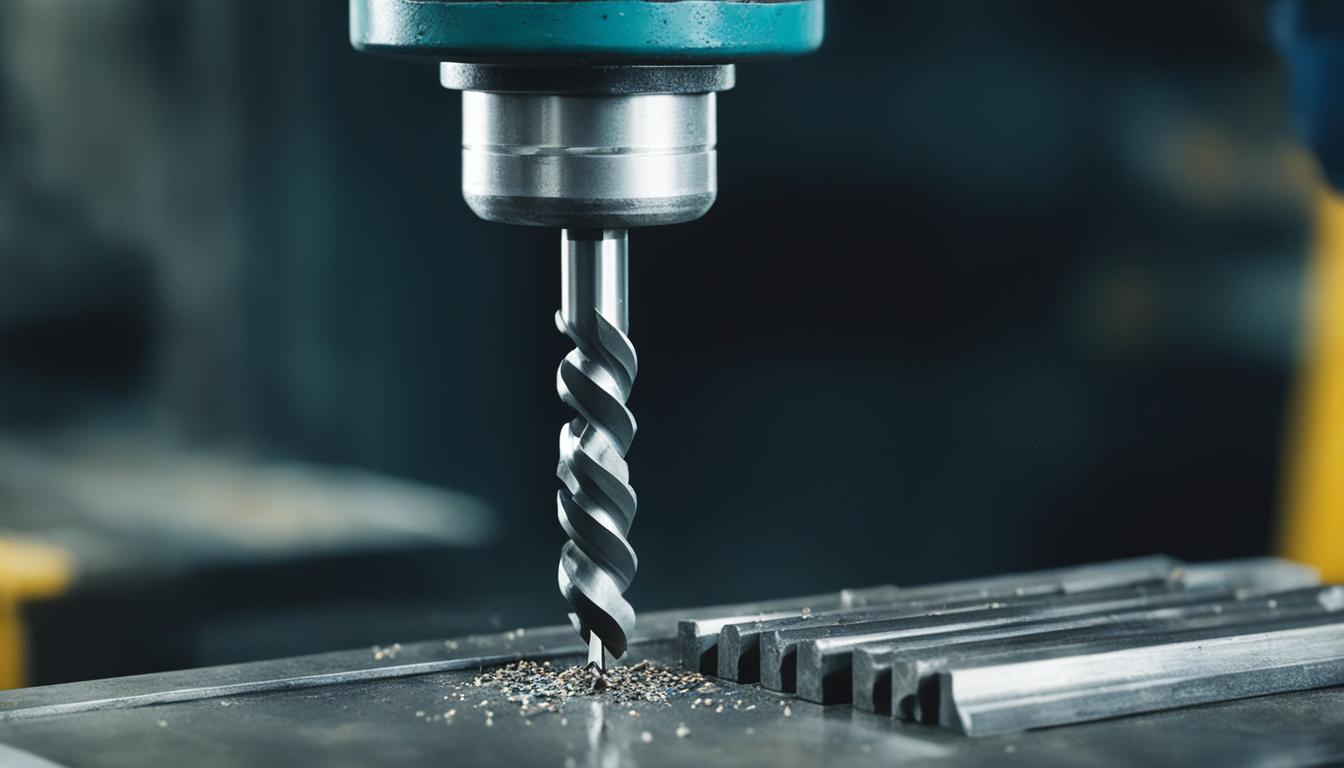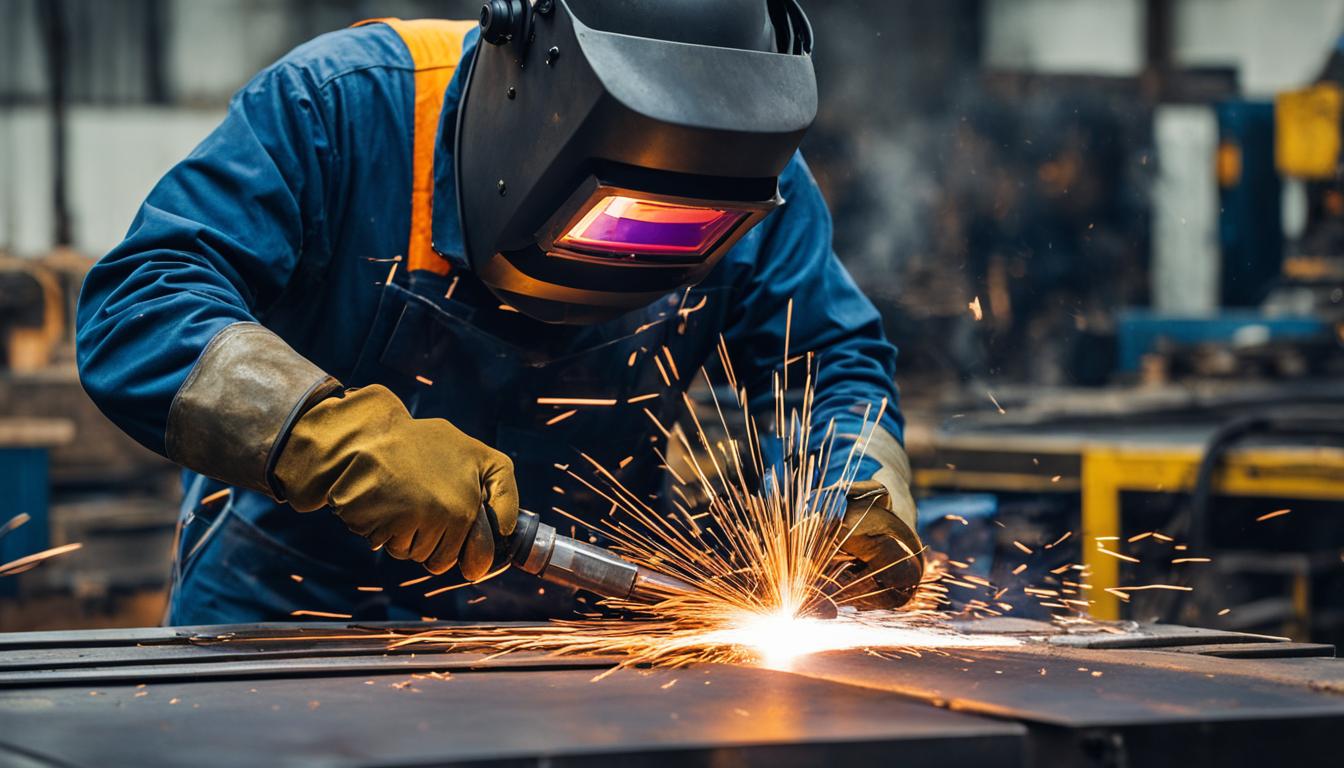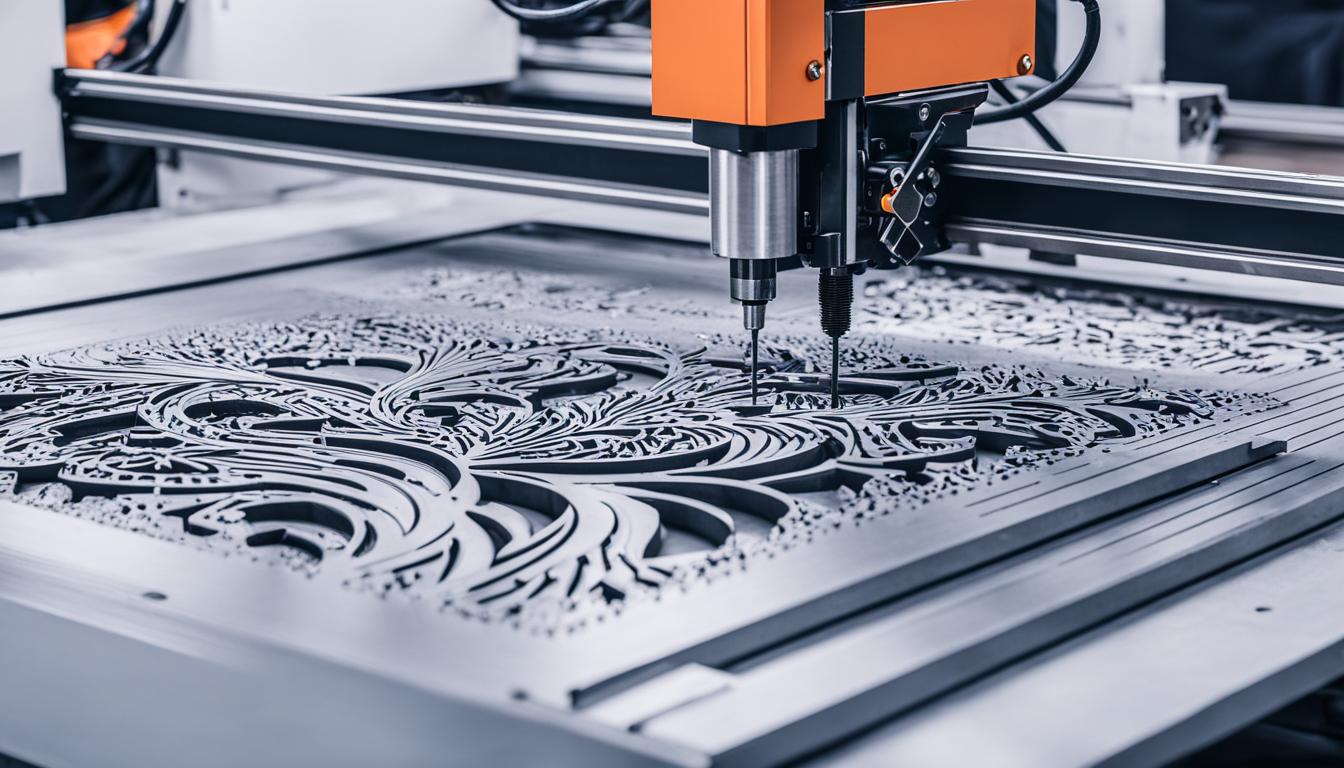The cutting process is a subtractive metalworking technique that involves dividing a metal workpiece into multiple parts using force or erosion techniques. Common cutting processes include sawing, shaping, broaching, drilling, grinding, turning, and milling. The workpiece is held in a fixture, and one or more cutting operations are performed using various cutting tools. Setup changes are time-consuming and expensive, so the goal is to minimize the number of setups required. This is achieved through process planning, which involves determining the sequence of operations, grouping them into setups, and selecting the appropriate fixtures.
Key Takeaways
- The cutting process is a subtractive metalworking technique that divides a metal workpiece into multiple parts.
- Common cutting processes include sawing, shaping, broaching, drilling, grinding, turning, and milling.
- Process planning is crucial to minimize setup changes and optimize cutting operations.
- The goal is to reduce the number of setups required and select the appropriate fixtures.
- Understanding the cutting process is essential for efficient and accurate metalworking.
Introduction to Sawing
Sawing is an essential cutting process used to obtain the correct sized workpiece from a large raw material stock. It involves the use of various types of saws, including hacksaws, bandsaws, and circular saws. Each type of saw has its unique characteristics and applications.
Hacksaws
Hacksaws are manually operated cutting tools that consist of a straight blade that moves in a reciprocating motion. The blade is held in a frame, and the cutting action is achieved by pushing and pulling the blade across the workpiece. Hacksaws are commonly used for cutting through materials like metal rods, pipes, and plastics.
Bandsaws
Bandsaws are power tools that feature a continuous looped blade that moves in a continuous motion. The blade is guided by two pulleys, one of which is powered. This type of saw is ideal for cutting curves and irregular shapes in materials like wood, metal, and plastic.
Circular Saws
Circular saws are versatile power tools that feature a circular disk-shaped blade. They can be handheld or mounted on a stationary machine. Circular saws are commonly used for making straight cuts in various materials, including wood, metal, and masonry.
The sawing action involves the blade cutting through the material, creating chips or waste material. This process allows for precise and efficient cutting, making sawing a crucial technique in industries such as construction, woodworking, and metal fabrication.
| Type of Saw | Blade Design | Materials | Applications |
|---|---|---|---|
| Hacksaw | Straight reciprocating blade | Metal, plastic, rods, pipes | Plumbing, metalworking, DIY projects |
| Bandsaw | Continuous looped blade | Wood, metal, plastic | Furniture making, metal fabrication, curve cutting |
| Circular Saw | Circular disk-shaped blade | Wood, metal, masonry | Carpentry, construction, metalworking |
Exploring Shaping
Shaping is a crucial cutting process that utilizes a shaping machine to create planar surfaces and prepare rectangular blocks for subsequent machining operations. This process involves the use of a single-point tool that moves horizontally in a reciprocating motion along a slide. The shaping machine consists of three main components: the chip, the slide, and the tool post pivot.
During the shaping process, as the tool post rotates and the slide returns, the chip is formed, causing the workpiece to shift for the next stroke. This continuous reciprocal motion of the single-point tool enables the creation of precise and flat surfaces on the workpiece. Shaping is commonly employed in various industries such as automotive manufacturing, aerospace, and mold and die making.
Let’s take a closer look at the key components of a shaping machine:
| Components | Description |
|---|---|
| Chip | The chip is formed as the tool post rotates and the slide returns, causing the workpiece to shift for the next stroke. It plays a vital role in the shaping process. |
| Slide | The slide serves as a guide and support for the tool post and helps in controlling the horizontal movement of the single-point tool. |
| Tool post pivot | The tool post pivot acts as the anchor point for the tool post and enables the back-and-forth motion necessary for shaping. |
The shaping process finds its applications in industries that require the creation of flat surfaces and the preparation of workpieces for further machining. For example, in automotive manufacturing, shaping is used to produce engine components with precise flat surfaces, while in the aerospace industry, it is employed to create structural parts for aircraft.
Understanding Broaching
Broaching is a cutting process widely used in industries such as automotive, aerospace, and defense for the mass production of complex geometry parts. It is particularly effective when intricate hole shapes need to be created. The broaching process involves using a broach tool that has a series of cutting teeth along its axis.
As the broach tool is pulled along the part to be cut, the cutting teeth remove material progressively. The first few sets of teeth remove most of the material, while the last few provide a finishing cut. The last set of teeth has the same geometry as the required part, ensuring the desired specifications are achieved.
Broaching has numerous applications across industries. In the automotive sector, it is commonly used to create internal features in engine blocks, such as keyways, splines, and gear teeth. In the aerospace industry, broaching is utilized to produce aircraft engine components that require precise hole shapes and profiles. The defense sector also relies on broaching for manufacturing firearm barrels and other critical parts.
Advantages of Broaching Process
- Accurate and precise cutting of complex shapes
- Highly efficient for mass production
- Can achieve tight tolerances
- Reduces the need for multiple machining operations
- Cost-effective for large-scale production
The broaching process offers distinct advantages over other cutting methods when it comes to producing intricate parts efficiently. It eliminates the need for multiple setups and tool changes, reducing production time and costs. Furthermore, the accuracy and precision of broaching ensure consistent results, meeting the stringent requirements of various industries.
| Broaching Applications | Industries |
|---|---|
| Keyway cutting | Automotive, Aerospace, Defense |
| Spline cutting | Automotive, Aerospace, Defense |
| Gear cutting | Automotive, Aerospace, Defense |
| Internal profiling | Automotive, Aerospace, Defense |
| Firearm barrel manufacturing | Defense |
Exploring Drilling, Reaming, Boring, and Tapping
Drilling, reaming, boring, and tapping are essential metal cutting methods used in various industries to create different types of holes and threads in a workpiece. Each of these processes serves a specific purpose and offers unique advantages.
Drilling Process
Drilling is the most common method used to create round holes in a workpiece. It involves using a twist drill bit with straight cutting teeth to remove material. The drill bit rotates and applies downward pressure to penetrate the workpiece, creating a hole. Drilling can be performed manually or with the use of drilling machines or CNC equipment.
Reaming Process
Reaming is a process used to improve the dimensional tolerance of a drilled hole. It involves using a reamer, which has multiple cutting edges, to remove a small amount of material from the walls of the hole. This process ensures a smoother and more precise hole, suitable for applications where tight tolerances are required.
Boring Process
Boring is a metal cutting method that uses a lathe-like machine to cut high precision holes in a workpiece. It is typically used to enlarge existing holes or create larger diameter holes with accurate dimensions. Boring machines utilize single-point cutting tools to remove material and create smooth, concentric holes.
Tapping Process
Tapping is a process used to create screw threads in pre-drilled holes. It involves the use of a tap, which has threads that match the desired screw thread size. The tap is inserted into the hole and rotated, cutting the threads into the workpiece. Tapping can be done manually or with the help of tapping machines.
These drilling processes find applications in various industries, including construction, automotive, manufacturing, and many others. From creating holes for fasteners and components to ensuring accurate dimensions and threading, drilling, reaming, boring, and tapping play a crucial role in the production of a wide range of products.

Understanding Grinding and Abrasive Machining
Grinding is an abrasive machining process that utilizes grinding wheels made of tiny, hard particles to remove small amounts of material from the workpiece. This precision grinding process is commonly used to improve the surface finish of parts manufactured by other processes, ensuring a high-quality final product.
Abrasive machining, including grinding, is particularly effective when working with brittle materials that cannot be easily cut using conventional methods. The abrasive particles embedded in the grinding wheels are incredibly hard and have the ability to wear away the material, resulting in a smooth and polished surface.
Grinding finds diverse applications across multiple industries, including automotive, aerospace, and mold making. In the automotive industry, grinding is used for precision machining of engine components, transmission parts, and brake components. Aerospace applications include grinding turbine blades, engine components, and structural parts. In the mold making industry, grinding is vital for achieving the desired surface finish of molds and dies.
Grinding not only enhances the aesthetics of the final product but also improves its functional performance. By removing surface imperfections and irregularities, it ensures proper fit and function of the machined parts. Furthermore, grinding can be used to achieve tight dimensional tolerances and precise geometries, resulting in accurate and reliable components.
Overall, grinding and abrasive machining play a critical role in various industries and applications, enabling the production of high-quality components with superior surface finish and dimensional accuracy.
Exploring Waterjet Cutting
Waterjet cutting is a highly versatile and efficient metal cutting process that utilizes the power of highly pressurized water to erode the material and create precise cuts. Unlike traditional cutting methods, waterjet cutting is a cold process that does not require physical contact between the cutting head and the workpiece.
Waterjet cutting can be used to make linear, non-linear, and internal cuts in a wide range of materials, including metals, composites, and even stone. The process involves high-pressure water being forced through a small orifice, creating a narrow jet of water capable of cutting through thick materials with ease.
Some key advantages of waterjet cutting include:
- Precision: Waterjet cutting offers exceptional precision, allowing for intricate and complex cuts with tight tolerances.
- Minimal material wastage: Since waterjet cutting is a non-contact process, there is no physical force applied to the material, resulting in minimal material wastage and the ability to cut intricate shapes without distortion.
- Ability to cut thick materials: Waterjet cutting has the ability to cut through thick materials that would otherwise be difficult to cut using other methods, making it ideal for industries that require cutting thick plates and materials.
Waterjet cutting finds applications in various industries, including:
- Automotive: Waterjet cutting is used in the automotive industry for precise cutting of metal components and materials.
- Manufacturing: The versatility and precision of waterjet cutting make it a valuable tool in manufacturing processes, allowing for efficient and accurate fabrication of parts.
- Aerospace: Waterjet cutting is used in the aerospace industry for cutting and shaping various components, including aircraft parts and composite materials.
Overall, waterjet cutting offers a highly efficient and precise method for metal cutting, providing numerous advantages over traditional cutting techniques. Its versatility and ability to cut a wide range of materials make it a popular choice in various industries.
Understanding Laser Cutting
Laser cutting is a precise metal cutting method that utilizes high-frequency light rays to melt the workpiece and create cuts. This advanced technology offers several advantages over traditional cutting processes.
Laser Cutting Process
The laser cutting process involves focusing a laser beam onto the workpiece, which heats the material and causes it to melt or vaporize. The intense heat generated by the laser beam allows for precise cutting with minimal material wastage. The laser can be controlled to cut intricate shapes and patterns, making it highly versatile.
Laser Cutting Advantages
- Precision: Laser cutting offers unmatched precision, allowing for the creation of intricate and complex designs.
- Speed: The laser cutting process is significantly faster than conventional cutting methods, resulting in higher production rates.
- Versatility: Laser cutting works on a wide range of materials, including metals, plastics, wood, and fabrics.
- Minimal Heat Affected Zone: Laser cutting produces a small heat affected zone, reducing the chances of material distortion or damage.
Laser Cutting Applications
Laser cutting finds applications in various industries, including:
- Automotive: Laser cutting is used in automotive manufacturing for precision cutting of parts and components.
- Manufacturing: It is widely utilized in manufacturing industries for prototyping, fabrication, and production of intricate parts.
- Electronics: Laser cutting is employed in the electronics industry for precise cutting of circuit boards and other electronic components.
Laser cutting offers unmatched precision, speed, and versatility, making it a preferred choice for many industries. Its ability to cut complex shapes and work with various materials makes it a valuable tool in modern manufacturing processes.
Exploring Plasma Cutting
Plasma cutting is a metal cutting technique that utilizes an ionized stream of gases to melt the material and create precise cuts. The process involves directing a high-velocity jet of ionized gas through a nozzle onto the workpiece, resulting in the formation of a plasma arc. The intense heat generated by the plasma arc melts the metal, and a high-velocity gas jet blows the molten material away, creating the desired cut.
Plasma cutting offers several advantages over other cutting methods. Firstly, it offers high precision, allowing for intricate and complex cuts with minimal kerf width. This accuracy makes it ideal for applications that require tight tolerances and intricate detailing. Additionally, plasma cutting is capable of cutting a wide range of materials, including stainless steel, aluminum, and non-ferrous metals. This versatility makes it a popular choice in various industries.
- Plasma cutting advantages:
- Precision cutting with minimal kerf width
- Ability to cut a wide range of materials
- Fast cutting speeds
- Minimal heat-affected zone
- Leaves a clean and smooth cut edge
Plasma cutting finds applications in a variety of industries. In metal fabrication, it is used for cutting intricate shapes in sheet metal, structural shapes, and pipes. The construction industry utilizes plasma cutting for tasks like HVAC ductwork fabrication, metal roof installation, and cutting steel beams. The automotive industry benefits from plasma cutting in the production of car frames, exhaust systems, and custom body panels.
To illustrate the applications of plasma cutting, below is a table showcasing some common industries and their specific uses:
| Industry | Plasma Cutting Applications |
|---|---|
| Metal Fabrication | Cutting sheet metal, structural shapes, and pipes |
| Construction | HVAC ductwork fabrication, metal roof installation, cutting steel beams |
| Automotive | Car frame production, exhaust system fabrication, custom body panels |
Overall, plasma cutting is a versatile and precise cutting method that offers numerous advantages in various industries. Its ability to cut different materials efficiently and accurately makes it a valuable tool for metal fabricators, construction professionals, and automotive manufacturers.

Understanding Oxy-fuel Cutting
Oxy-fuel cutting, also known as flame cutting, is a portable and cost-effective metal cutting method that utilizes a flammable fuel mixture of oxygen and other gases to generate high temperatures. These high temperatures are used to melt the material, enabling precise cutting. While oxy-fuel cutting has its limitations in terms of accuracy and material thickness, it finds valuable applications in small-scale metal fabrication workshops and construction projects.
One of the main advantages of oxy-fuel cutting is its portability. The equipment is relatively lightweight and can be easily transported to different job sites. This makes oxy-fuel cutting a popular choice for on-site cutting needs, providing flexibility and convenience.
Another advantage of oxy-fuel cutting is its cost-effectiveness. The fuel mixture used in this process is relatively inexpensive compared to other cutting methods. Additionally, the equipment required for oxy-fuel cutting is often more affordable and accessible, making it an economical choice for small-scale operations.
While oxy-fuel cutting is portable and cost-effective, it does have limitations. The accuracy of cuts may not be as high compared to other cutting methods, which can affect the overall finish of the workpiece. Additionally, the material thickness that can be effectively cut using oxy-fuel cutting is limited.
Oxy-fuel cutting has various applications in small-scale metal fabrication workshops, where portability and cost-effectiveness are key considerations. It is commonly used for tasks such as cutting structural steel, plates, and pipes. In the construction industry, oxy-fuel cutting is utilized for tasks like cutting metal components for buildings, bridges, and infrastructure projects.
Overall, oxy-fuel cutting is a versatile metal cutting process that offers portability and cost-effectiveness. While it may have limitations in terms of accuracy and material thickness, it remains a valuable method for small-scale metal fabrication workshops and construction projects.
Exploring Electrical Discharge Machining (EDM) and Electrochemical Machining
Electrical Discharge Machining (EDM) and Electrochemical Machining are two distinct metal cutting processes that offer unique advantages for specific applications.
EDM, also known as spark erosion, involves the use of electrical sparks to remove material from a workpiece. This process is particularly effective for creating non-linear cuts and working with hard materials such as hardened steel and titanium alloys. EDM has applications in industries like aerospace, automotive, and mold and die manufacturing.
On the other hand, Electrochemical Machining (ECM) is a process that utilizes a combination of electric current and chemical reactions to eliminate material. ECM is known for its ability to cut hard materials, including heat-resistant alloys and superalloys. Furthermore, this process is well-suited for working on small-scale parts that have intricate shapes or microstructures. ECM finds applications in industries such as microelectronics, medical device manufacturing, and metal tool production.
In summary, both EDM and ECM offer unique solutions for metal cutting requirements. While EDM excels in non-linear cuts and hard materials, ECM is ideal for cutting hard materials and working on complex-shaped small-scale parts.
